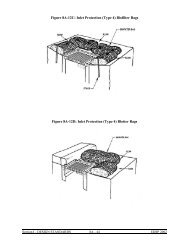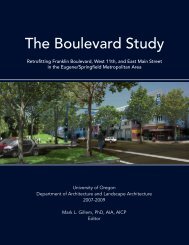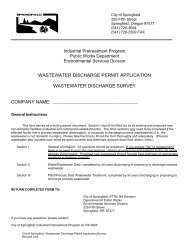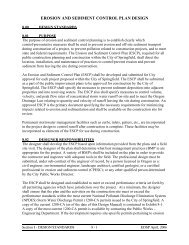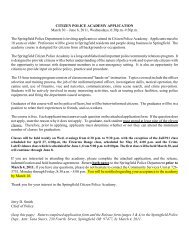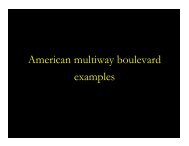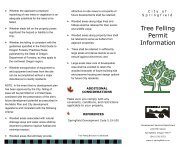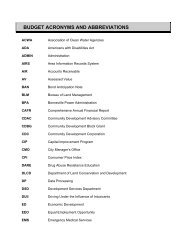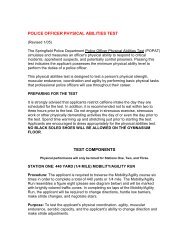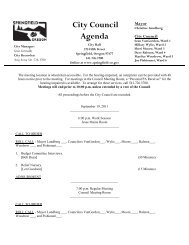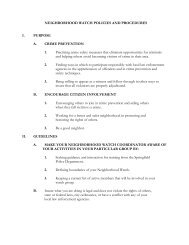Franklin Boulevard Study - City of Springfield
Franklin Boulevard Study - City of Springfield
Franklin Boulevard Study - City of Springfield
Create successful ePaper yourself
Turn your PDF publications into a flip-book with our unique Google optimized e-Paper software.
This section summarizes the four elements <strong>of</strong> the project’s planning<br />
process: public involvement, problem statement, goals and evaluation<br />
criteria, and development and evaluation <strong>of</strong> alternatives. A timeline<br />
for the project is shown in Figure 2.<br />
Public Involvement<br />
Community members, stakeholders, and other interested parties<br />
actively participated in the development <strong>of</strong> the preferred concept<br />
which began in July 2007 (see Figure 2). The public involvement<br />
process kicked-<strong>of</strong>f with a series <strong>of</strong> stakeholder interviews designed to<br />
help the project team understand community issues. A 15-member<br />
stakeholder advisory committee met 8 times during the study. The<br />
project developed alternatives through a design workshop held in<br />
August 2007. The three-day design workshop included two meetings<br />
with the Stakeholder Advisory Committee and a public open house.<br />
A second public open house was held in February 2008 to review the<br />
Stakeholder Advisory Committee’s final recommendation.<br />
Documentation <strong>of</strong> the public involvement process is included in<br />
Appendix A.<br />
Problem Statement<br />
The Stakeholder Advisory Committee and <strong>City</strong> staff worked together<br />
to develop a problem statement for the project that identified the<br />
range <strong>of</strong> issues and aspirations that the project should address. The<br />
problem statement included reference to the following issues or<br />
opportunities:<br />
<br />
<br />
<br />
<br />
<br />
<strong>Franklin</strong> <strong>Boulevard</strong> is a major east-west route in the area and a<br />
gateway to Eugene, downtown <strong>Springfield</strong>, the University <strong>of</strong><br />
Oregon, and Glenwood.<br />
<strong>Franklin</strong> <strong>Boulevard</strong> lacks adequate pedestrian and bike facilities<br />
<strong>Franklin</strong> <strong>Boulevard</strong>, in its current form, does not support the<br />
community’s redevelopment goals.<br />
<strong>Franklin</strong> <strong>Boulevard</strong> has a constrained right-<strong>of</strong>-way and any<br />
widening <strong>of</strong> the existing cross section will require displacement<br />
<strong>of</strong> businesses and acquisition <strong>of</strong> private property.<br />
<strong>Franklin</strong> <strong>Boulevard</strong> serves a range <strong>of</strong> transportation needs from<br />
freight movement to commuters to those patronizing businesses<br />
in the corridor. It is also a bus rapid transit corridor where buses<br />
currently operate in mixed traffic.<br />
Stakeholder Advisory Committee meeting (February 2008)<br />
2 FRANKLIN BOULEVARD STUDY



